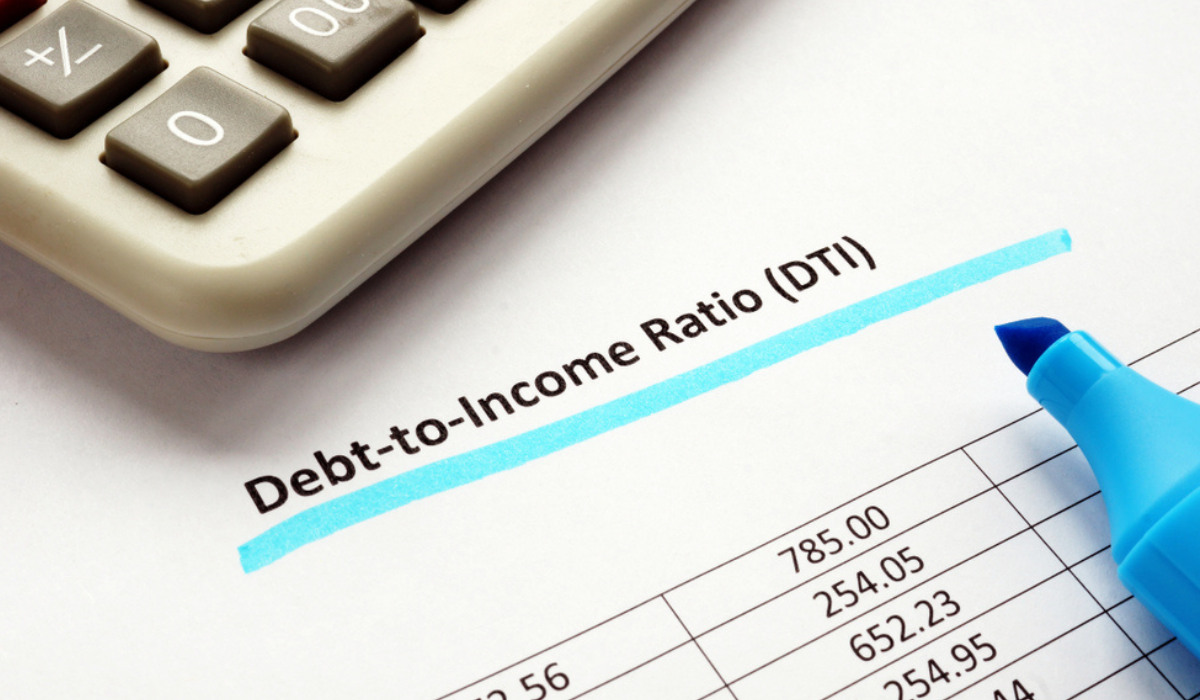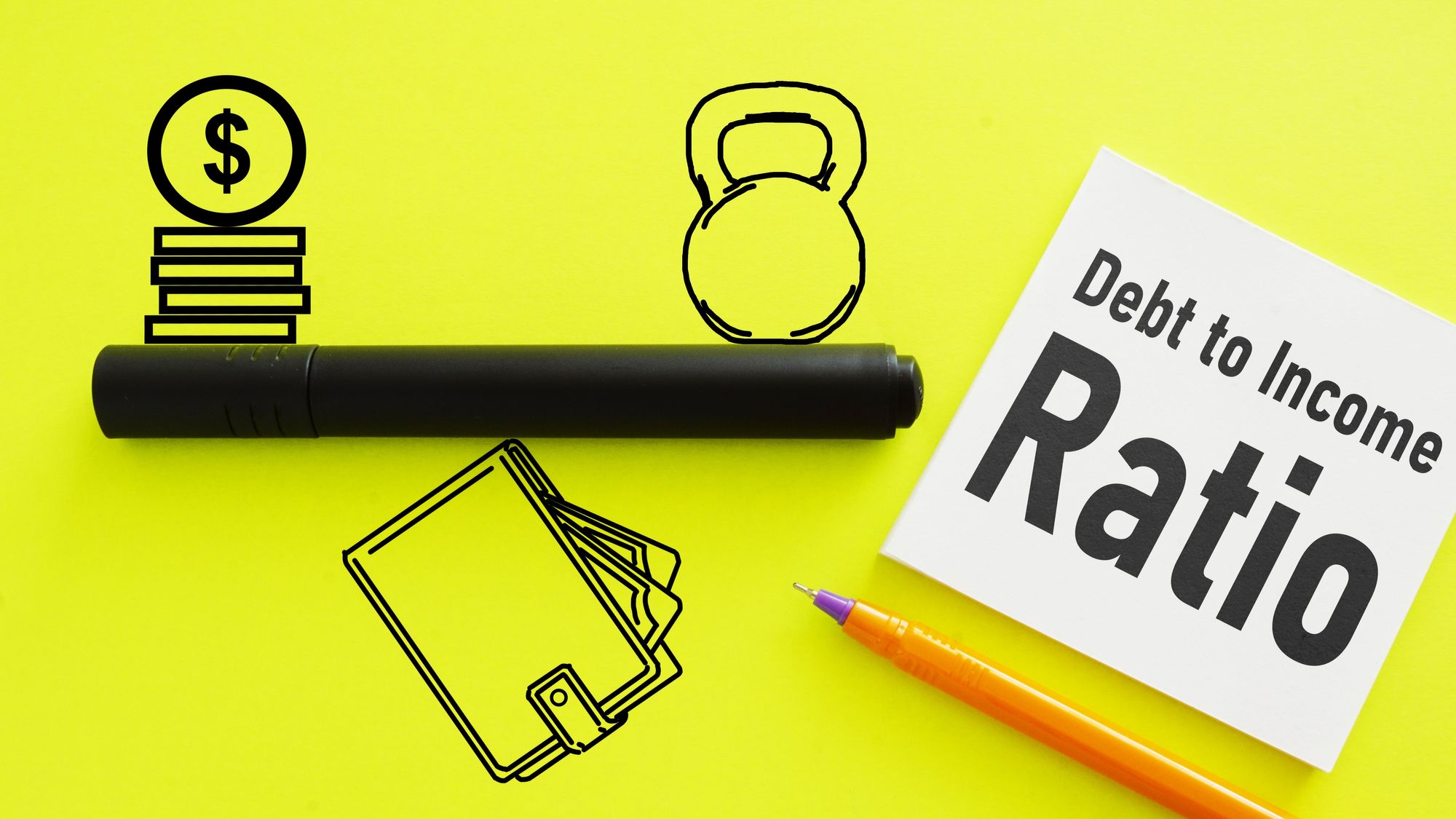A Debt-to-income (DTI) Ratio is the percentage of gross monthly income that goes paying to the monthly debt payments and is used by lenders to determine the borrowing risk. The Debt-to-income (DTI) Ratio is the metric used by creditors to determine the ability of a borrower to pay their debt and make interest payments. DTI is the key indicator that lenders use to measure an individual’s ability to repay monthly payments and accumulate additional debt. Debt-to-income (DTI) Ratio is the Key factor in getting approved for a Mortgage.
A Debt-to-income (DTI) Ratio is the measure of how much of monthly income goes to paying debt, including housing costs, personal loans, and credit card payments. The Debt-to-income (DTI) Ratio indicates how much of monthly income goes towards debt payments. Debt-to-income (DTI) Ratio is the most important factor measurement for not determining whether a borrower qualifies for a new Loan or not. To calculate the Debt-to-income (DTI) Ratio, simply divide the total monthly debt payment by gross monthly income. A low Debt-to-income (DTI) Ratio indicates sufficient income relative to debt servicing and it makes a borrower more attractive.
The Debt-to-income (DTI) Ratio is of the utmost importance to creditors that are considering providing financing to the borrowers. A higher Debt-to-income (DTI) Ratio is unfavorable for the creditors to see as it indicates that a higher proportion of an individual’s income goes towards the monthly debt payments. When a borrower tries to apply for the Debt-to-income (DTI) Ratio then a lender looks for the Debt-to-income (DTI) Ratio. This figure indicates how much money the borrower debts and how much their income is. Before applying for a Home Loan, It is very important to know The Debt-to-income (DTI) Ratio as it is to check the credit score.
What Is Debt-to-income (DTI) Ratio?
A Debt-to-income (DTI) Ratio is the percentage that tells the lenders how much money they spend on monthly debt payments versus how much money they have coming into their household. The Debt-to-income (DTI) Ratio compares the monthly debt payments to the monthly gross Income. When a borrower tries to apply for a Mortgage, then banks or other types of lenders use the ratio to help determine how much of the borrower’s income goes toward the current debt obligations and how much more they can afford to take on. The Debt-to-income (DTI) Ratio is the numeric value in percentage that measures the debt repayment capacity in relation to the gross monthly Income. The maximum Debt-to-income (DTI) Ratio varies from lender to lender. However, the lower the Debt-to-income (DTI) Ratio the better the chances that the borrowers will be approved for the loan application.

What Are The Types of Debt-to-income (DTI) Ratio?
There are following two types of Debt-to-income (DTI) Ratio:
- Front-End Debt-to-income (DTI) Ratio: It is also known as the housing ratio. The debt-to-income (DTI) Ratio indicates the percentage of borrowers’ income that would go towards housing expenses. This also includes the monthly mortgage payments, property tax, homeowners insurance, and homeowners association fees.
- Back-End Debt-to-income (DTI) Ratio: The Debt-to-income (DTI) Ratio indicates how much of income goes to cover all monthly debt obligations. This also includes the mortgage and other housing expenses, credit cards, auto loans, child support, student loans, and regularly recurring items.
How To Calculate The Debt-to-income (DTI) Ratio?
In order to calculate the Debt-to-income (DTI) Ratio, start by adding all monthly debt obligations. This includes credit cards and other lines of credit, installment loans such as student loans, car loans, and personal loans. Here below are some steps to Calculate the Debt-to-income (DTI) Ratio:
- Add Up the Monthly Debt Payments: In the First Step, Factor in all the debt obligations including rent and house payments, personal loans, auto loans, child support, student loans, and credit card payments. if the borrower is applying with someone else, combine both of the monthly debts.
- Divide Debts by Monthly Gross Income: In the Second Step, divide debt payments by pre-tax monthly income. Make sure to use the combined debt and income of all Mortgage Payments.
- Convert the Figure into Percentage: In the Final Step, convert the Debt-to-income (DTI) Ratio from a decimal to a percentage by multiplying by 100.
Here is the Formula to Calculate the Debt-to-income (DTI) Ratio:
DTI = Monthly Debts / Gross Monthly Income
What Are The Requirements For Debt-to-income (DTI) Ratio?
Here are the Debt-to-income (DTI) Ratio requirements by mortgage type:
- FHA Loans: These Loans are the mortgages backed by the U.S. Federal Housing Administration (FHA). These Mortgage loans have more lenient qualification requirements than other types of mortgage loans. In order to qualify for FHA Loans, the borrowers must have a minimum credit score of 580. The maximum Debt-to-income (DTI) Ratio for the FHA Mortgage Loans is 57%. However, each lender is free to set their own requirements.
- USDA Loans: These Mortgage Loans are used to buy and refinance homes in eligible rural areas. The USDA Mortgage Loans have a couple of unique requirements. Borrowers can’t get USDA Loans if their household income exceeds 115% of the median income in their area. The Debt-to-income (DTI) Ratio for USDA Mortgage Loans is less than 41%.
- VA Loans: These Mortgage Loans are insured by the Department of Veterans Affairs. VA Loans offers a low-cost way for current and former members of veterans, armed forces, and their spouses to buy a home. VA Loans don’t require Down Payments and these Mortgage Loans often have more lenient DTI requirements. The Debt-to-income (DTI) Ratio for USDA Mortgage Loans is 60% in some cases.
How To Lower Debt-to-income (DTI) Ratio?
Here is the Process to Lower The Debt-to-income (DTI) Ratio:
- Pay off Debt: The preferred option is to lower the Debt-to-income (DTI) Ratio by repaying as much of the debt as the borrowers can manage.
- Refinance Existing Loans: Seek out options for lowering the rate of interest on the debt or attempt to lengthen the duration of the loan.
- Look for Loan forgiveness: These kinds of programs may help to determine some of the debt entirely.
- Pay off high-interest rates: In case the borrowers can not refinance the loans, then focus on repaying at higher interest rates. These carry the heavier weight in the Debt-to-income (DTI) Ratio Calculations, so paying them off first will improve the ratio.
- Get a Co-signer: With conventional Mortgage Loans, the co-signer often has to reside in the House. However, the FHA Loans don’t carry the requirement.
- Seek out the additional income: If the eligible borrowers are able to earn more, it will improve their Debt-to-income (DTI) Ratio.
Frequently Asked Questions (FAQs)
Question 1: What is a Good Debt-to-income (DTI) Ratio?
Answer: The Maximum Debt-to-income (DTI) Ratio varies from lender to lender. However, the lower the Debt-to-income (DTI) Ratio, the better the chances that the borrowers will approved for the loan application. A Debt-to-income (DTI) Ratio of 50% is not favorable for the loan application. However, 43% is the highest Debt-to-income (DTI) Ratio, a borrower can have and still get qualified for a mortgage. A 36% Debt-to-income (DTI) Ratio is generally considered manageable.
Question 2: Is 20% Debt-to-income (DTI) Ratio Bad?
Answer: The 20% Debt-to-income (DTI) Ratio indicates that the borrowers have enough monthly income to pay off obligations and put towards savings and investments.
Question 3: Should I Apply for a Home Loan with a High Debt-to-income (DTI) Ratio?
Answer: A High Debt-to-income (DTI) Ratio means that lenders may be less willing to provide a Mortgage Loan or may ask to pay a higher rate of interest for the loan. Borrowers can still apply for and receive mortgage loans with a high Debt-to-income (DTI) Ratio, it’s best to look for ways to lower the ratio if possible.
Question 4: Can My Debt-to-income (DTI) Ratio Affect My Credit Score?
Answer: No, directly. The ratio itself is not used to calculate Credit Score. However, the factors that contribute Debt-to-income (DTI) Ratio can also affect borrowers’ credit.
Question 5: What is Bad Debt-to-income (DTI) Ratio?
Answer: The debt-to-income (DTI) Ratio above 50% is the bad debt ratio that reduces the eligibility for more loans. A high Debt-to-income (DTI) Ratio may also stretch the finances and make repayments challenging for the borrowers.
Question 6: How quickly can I improve my Debt-to-income (DTI) Ratio?
Answer: If you want to boost your income or have cash reserves that you can use to pay off debt, you could change your Debt-to-income (DTI) Ratio in a day. If you are saving for a Home, then you can not afford to put all your savings toward existing debt, so you will want to make a slow and steady approach over weeks or months.
The Bottom Lines
The Debt-to-income (DTI) Ratio is how much the borrowers pay in debt every month compared to the gross monthly income. It is the key factor when it comes to qualifying for a Mortgage. The Debt-to-income (DTI) Ratio helps lenders gauge how much mortgage the borrowers can reasonably afford.
